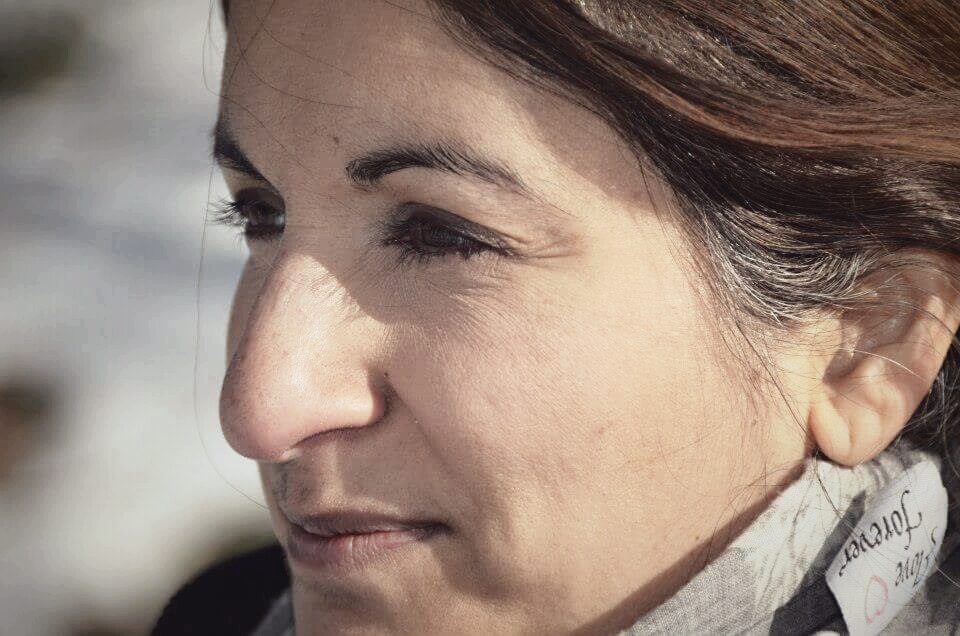My name is Åsa Viklund and I am a psychotherapist and a social worker. I have further education in visual art therapy, family therapy, expressive arts therapy and symbolic work. I meet clients individually and give workshops in groups. Sometimes I give presentations, arrange workshops or provide training. I have a private practice in Gothenburg, Sweden, and I work with child, youth and family therapy at a primary health care unit.
A part of my work is done by using internet and video equipment. I will gladly provide arts therapy on the internet for those interested in trying it. Much work can be done even through the small lens of a camera.
I am eclectic and use different methods in my therapy work. The methods are chosen and adjusted to fit the needs of the clients I meet. Below, you can see a short description of my method.
Contact: asa@artspsychotherapy.se

Method
I offer arts in psychotherapy. By using different artistic expressions, my work is focused on the symbolic, non-verbal level. Sessions can include painting, dream work, visualizations, fairy tales, mythology, body expression, mindfulness, drama and puppetry. Often these tools are combined and used intermodal. For example, an aspect of oneself – such as the angry or the sad me – can be painted and then be put into words. Feelings can get a shape, color, sound or movement. This is what is often referred to as externalization. Parts of self is put on the outside of oneself, and, after processing, it is put back inside in a changed form. Finally, verbal exploration is often used as a complement in the final phase, to enhance self knowledge on a conscious level.
I combine arts therapy with different therapeutic approaches, for example Cognitive-Behavioral Therapy (CBT), cognitive therapy, Affect focused therapy, salutogenic and systemic approaches. In CBT work is done by exploring alternative behaviors, in cognitive therapy thoughts that cause suffering are challenged. In affect focused work, our feelings are made more conscious and adaptive. The salutogenic approach offers ways to bring health-related factors more space and finding solutions to problems. The systemic work focuses on communication, interplay, relation and context. I use Acceptance and Commitment therapy as well as mindfulness exercises; they help in getting perspective. This facilitates in the process of stopping to identify oneself with painful thoughts, feelings and views. Many studies have also shown that mindfulness can help people become more resilient. I believe that the therapy relation is as important as the method used and that it includes a genuine meeting between client and therapist. This connects beautifully with the humanistic approach, where existence is explored in a safe space.
In symbolic work, the psychodynamic and Jungian approaches are applied. The psychodynamic approach helps us to see the past in the now and the importance of mentalisation. Mentalisation is taking a meta perspective, seeing others from the inside and oneself from the outside. It is in a sense a ”playing with reality”. The unconscious plays a crucial part and it can bring messages we need to our conscious selves. The Jungian way sees the many dimensions and holds contradictions. Individuation, the Self and movement towards wholeness are central.
Literature
Carlsson, I-M., Arvidsson, S., Svedberg. P., Nygren, J.M., Viklund, Å., Birkeland, A-L., & Larsson, I. (2020). Making children’s voice heard, by creating a communication space: Outcomes of Sisom, an interactive assessment and communication tool, in the healthcare context. ”Journal of Child Health Care”, 2020:1.
Viklund, Å. (2025). Puppets in therapy assessment and diagnosis. The European Society of Medicine, Medical Research Archives, Vol 13, issue 2. https://doi.org/10.18103/mra.v13i2.6200
Viklund, Å. (2022). Puppets in Psychotherapy – an International Web-based Study among Clinicians in L. Kroflin & M. Amsden. (Eds.), ”Applied Puppetry in Education, Development, and Therapy: Theory and Practice” (p.141-152). Education, Development, Therapy Commission, UNIMA International & Academy of Arts and Culture, Osijek.
Viklund, Å. (2017). ”Puppets in Psychotherapy – a web-based study among clinicians”. Umeå University. Essay.
Viklund, Å. (2015). ”Can Chronically ill Teenagers benefit from Online Video Support Groups? A Systematic Search of Literature”. Jönköping University. Essay.
Full-text on Academia, click button below:
I will also share some favorite quotes of mine.
”I regard people as miracles, and the life within them as sacred.”
In ”Peoplemaking” by Virgina Satir (1972, p.40).
Finally, a quote from the psychoanalyst and pediatrician Donald W Winnicott (1896-1971):
”It is in playing and only in playing that the individual child or adult is able to be creative and to use the whole personality, and it is only in becoming creative that the individual discovers the self”.

